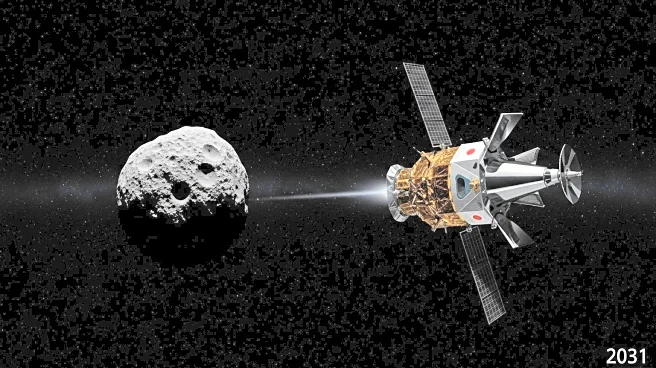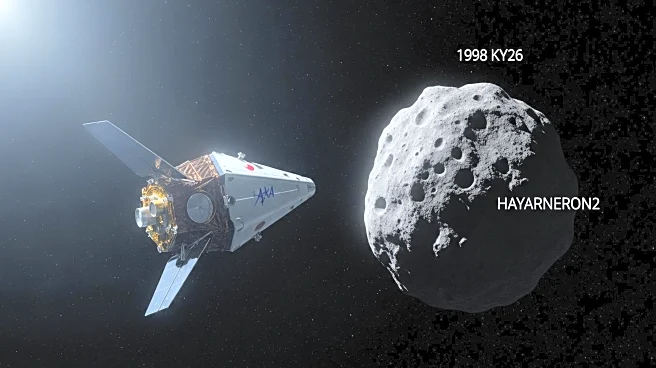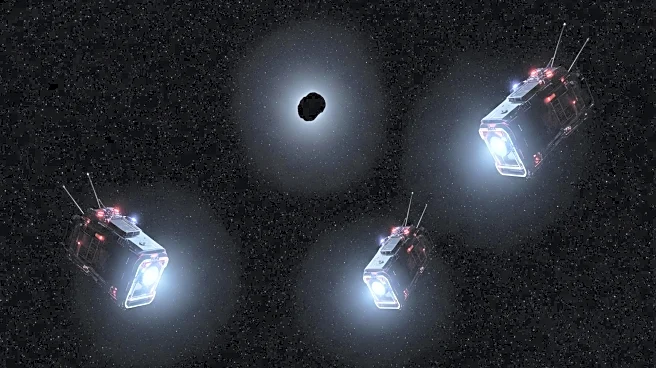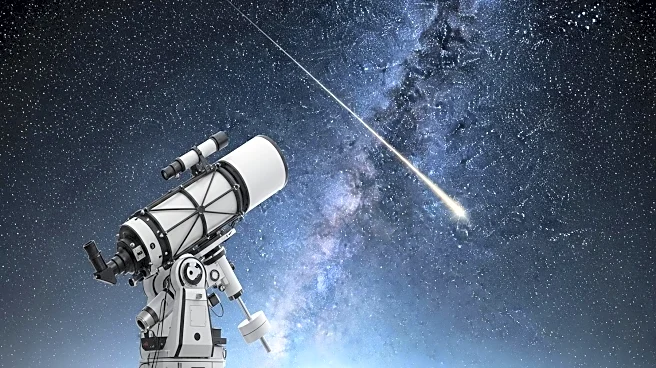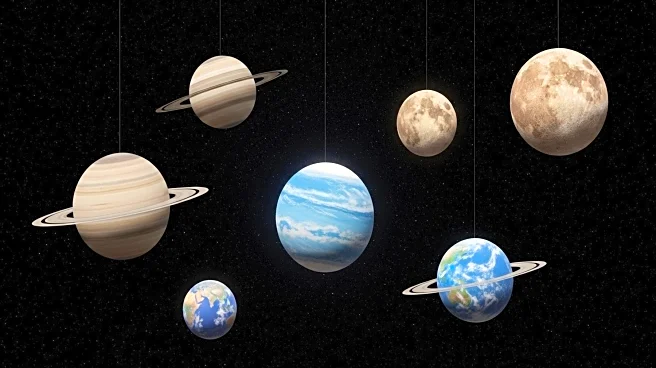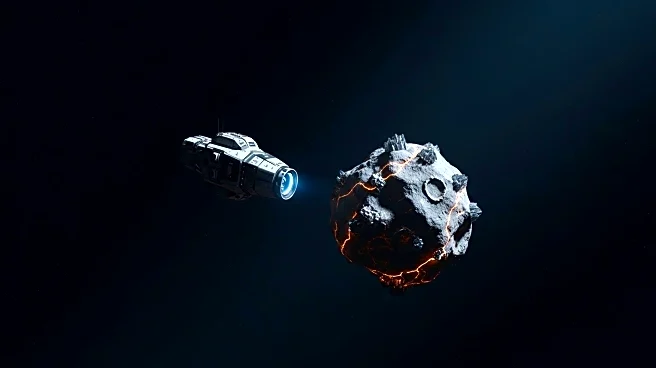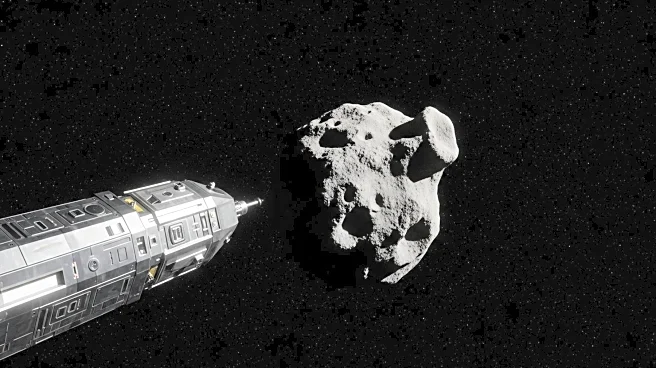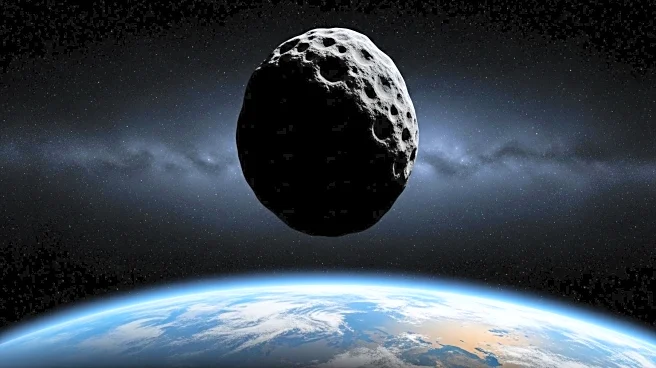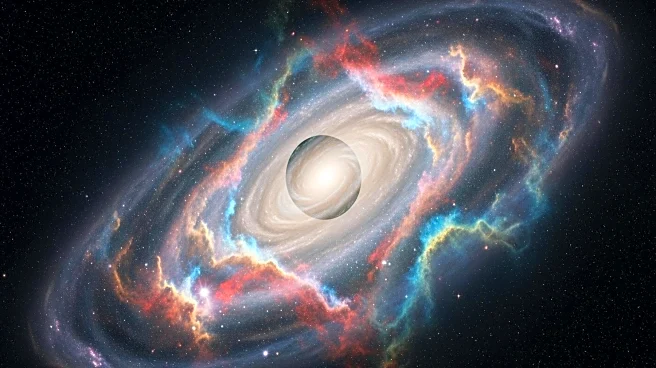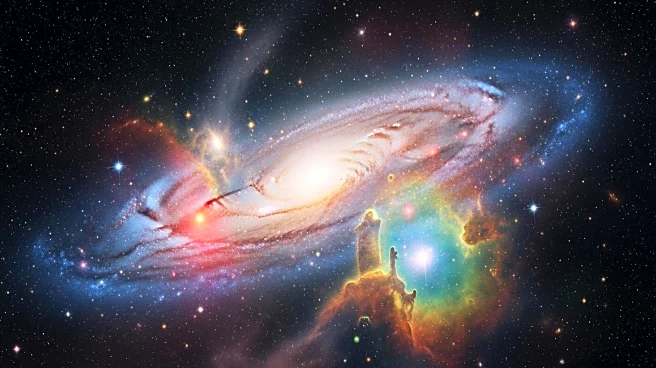What's Happening?
Japan's Hayabusa2 spacecraft is set to explore asteroid 1998 KY26, which has been revealed to be only 11 meters wide, making it the smallest asteroid ever targeted by a spacecraft. This discovery has added complexity to the mission due to the asteroid's rapid rotation, completing a spin every five minutes. The mission aims to gather insights into small celestial bodies, which are typically difficult to observe in detail. The spacecraft, which previously visited the larger asteroid Ryugu, has enough fuel to extend its mission to KY26. The asteroid's size and rapid rotation present significant challenges for the mission, requiring precise planning and execution.
Why It's Important?
The exploration of asteroid 1998 KY26 is significant for several reasons. It provides a unique opportunity to study small celestial bodies, which could inform future asteroid mining and enhance planetary defense strategies. Understanding the characteristics of small asteroids is crucial for assessing potential threats, as demonstrated by the Chelyabinsk event in 2013. The mission could pave the way for new methods in space exploration, offering insights into the composition and behavior of small asteroids. This research is vital for developing strategies to protect Earth from potential impacts and could revolutionize industries through resource extraction from asteroids.
What's Next?
As Hayabusa2 prepares for its rendezvous with KY26, the mission will test the limits of current technology and mission planning. The outcomes could influence future exploration efforts, including the potential for asteroid mining. The mission's success could enhance our ability to study other small celestial bodies, providing new resources for humanity and improving planetary defense strategies. The findings from this mission will contribute to our understanding of the universe and our place within it, potentially shaping future space exploration endeavors.
Beyond the Headlines
The mission to asteroid 1998 KY26 highlights the advancements in space technology and observational techniques. The collaborative efforts of astronomers worldwide, utilizing facilities like the Very Large Telescope, were essential in refining measurements of the asteroid's size and rotation period. These technological advancements allow scientists to resolve details of objects previously beyond our reach, enhancing our ability to study small celestial bodies. This capability is crucial for scientific inquiry and practical applications in space exploration and defense strategies.

